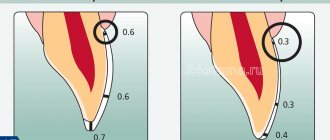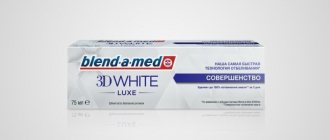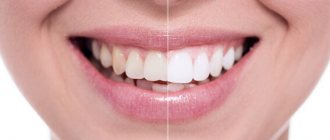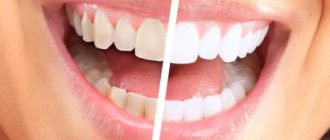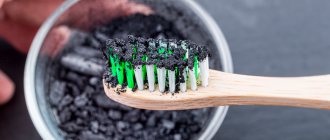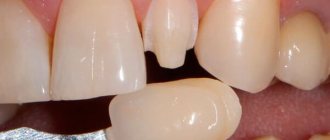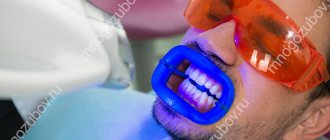Scientists have proven that a smiling person evokes more sympathy than even the most beautiful but gloomy top model. Moreover, employers are more loyal to those with healthy and beautiful teeth. Such people give the impression of being more responsible and efficient. And Dutch researchers claim that with a smile a person always looks younger than his age. How to achieve an ideal smile and what to do if nature has not endowed you with beautiful teeth, says Ilgam Vagifovich Mamedov, leading orthopedist and chief physician of the German Center for Aesthetic Dentistry SDent in Moscow.
The smile looks symmetrical
The basis of a beautiful smile is symmetry, that is, one half of the lips should be symmetrical to the other. When smiling, about 40 different facial muscles work, but they are all trained differently, which is why the smile often turns out to be asymmetrical.
Facial muscles can be trained with simple exercises (these exercises will not only make your smile perfect, but will also help avoid the appearance of facial wrinkles and improve diction).
- Purse your lips, pull them into a tube and hold them in this position for a few seconds. Then relax your lips. Repeat 5-8 times.
- Close your lips tightly, stretch them forward and try to make a figure eight with them. Then relax your muscles. Repeat the exercise 2-3 times.
- Stick out your tongue, clasp it tightly with your lips and hold this position for a few seconds, then relax the muscles of your lips and tongue as much as possible. Repeat five times.
- Stretch your lips into an unnaturally wide smile, and then relax them. Repeat five times.
Treatment and artistic restoration of teeth
with diseased teeth . Therefore, all units damaged by caries will have to be treated. During treatment, the dentist will remove all tissues affected by caries and restore the teeth with composite material or, more simply put, put fillings on them.
Fillings can also be used to hide aesthetic defects such as wide interdental spaces and chipped teeth. But a Hollywood smile acquired through artistic restoration requires careful and regular care, and in addition, the installed fillings will need to be changed from time to time.
How much does a Hollywood smile made using artistic restoration cost? The answer to this question will depend on a number of factors: the complexity of the treatment, the number of fillings that will need to be placed to eliminate all dental defects.
The smile looks sincere
They say that stars have been training to smile correctly for years, and some have their smiles even “put on” by image specialists.
To independently find the very shape that suits you completely, you need to train in front of the mirror and, of course, visit the dentist at least once a year.
By the way, on the Internet there are many photographs of stars before the dentist has worked on them thoroughly. Believe me, their smiles were very far from ideal. Demi Moore once admitted that she invested more than $12,000 in her teeth.
However, nothing will help you if your smile is insincere and forced. A positive attitude, cheerfulness and openness to the world will make any smile irresistible.
Liv Tyler
Expand to full screen Back 1 / 5 Forward
Teeth cleaning and whitening
If you want to join the Hollywood smiles club , your teeth must be white and free of plaque and tartar. Special procedures help solve this problem - professional teeth cleaning and whitening. These procedures will be quite enough to achieve a Hollywood smile if your teeth are straight, healthy, beautifully shaped and sized.
You will need to visit the dentist’s office, where, after an examination, a specialist will select the appropriate method for cleaning and whitening your teeth. The cost of a Hollywood smile, for which whitening and cleaning is enough, will be quite affordable, but only a doctor can tell you the exact price of the service - after you jointly choose the technologies by which the procedures will be carried out.
And they are different. For example, teeth cleaning can be carried out using ultrasound or an air-abrasive method (Air Flow technology), and whitening can be chemical, laser or using cold light lamps (photo whitening).
Procedure technology
Before the procedure, cone beam tomography is required to obtain a clear three-dimensional image of the patient’s jaw. Such diagnostics allows the dentist to draw conclusions about the quality and quantity of the patient’s bone tissue and the position of the remaining tooth roots.
The study also shows where exactly the nerves and sinuses are located, which will help calculate the placement of implants. To establish the exact location of the prostheses, individual templates created during tomography are used.
The concept of prosthetic technology is the use of 4 titanium implant pins. Two of them are fixed vertically in the front part of the jawbone, and the other two are fixed at an acute angle of up to 45° in the right and left sections. The implant pin is made of 2 parts: one is built into the bone tissue by the doctor, and the second - the tip - remains outside. For the procedure, implants with an inclined top are used, which allows the prosthesis to be secured directly.
In addition, the angled installation allows you to bypass the nerves and sinuses during surgery and achieve a secure attachment. The volume of fastening between the pins and the bone tissue increases significantly, which helps to evenly distribute the load during chewing and create reliable support for fixing new teeth.
During prosthetics, the doctor uses a surgical flap approach to the point where the pin is placed: the gum is incised and pushed back slightly. Then, using an ora, a place (bed) is created for the implant. When using templates, the stage of extracting a flap from the gum is skipped and the skin is simply pierced, which avoids unnecessary stitches.
The All-on-4 protocol allows for the installation of prostheses directly on the day of surgery, which is possible thanks to ultra-high-tech computer modeling. The technology allows you to use previously installed removable dentures, but in the future you will have to slightly reduce the load on your teeth. However, if a new prosthesis was created, it can be loaded without restrictions. After the procedure, the patient returns to normal life almost immediately.
Prosthetics are carried out in one stage (express implantation), the maximum period between the installation of implants and the fastening of temporary dentures is three days. After complete healing of the pins (about 5-6 months), permanent prostheses are installed, the guarantee for which is lifetime and justifies the fairly high price of the procedure.
Legal basis
An institution that wants to minimize the risks of any incidents will always offer the patient to enter into an agreement.
This is beneficial for both the center and the patient. The first clearly indicates the type and nature of the services provided, the boundaries of its responsibility and is insured against situations in which the work performed may remain unpaid. The patient has the opportunity to fix the cost of services, receive a guarantee and grounds for seeking compensation in the event of a medical error. And the contract is a prerequisite for receiving a tax deduction, and this, for a minute, is 13% of the cost of the work performed.
Material and technical base
Perhaps there are specialists who can treat teeth with meditative passes or the power of thought, but the scientific community knows nothing about them.
But she knows that the gold standard of modern dentistry consists of human minds, skillful hands, innovative techniques and high-tech equipment. CT scan, dental microscope, digital scanner - all this makes it possible to see the full clinical picture. Using a laser, a doctor can painlessly prepare hard and soft tissues; machines with artificial intelligence remove all types of dental plaque. And this is not a complete list of what any good clinic should have.
Veneers and Hollywood: a century-long love
Before looking at these miracle plates “under a microscope,” let’s delve a little into history. The first attempts to create something like modern veneers were made, oddly enough, in Hollywood, back in the 30s of the 20th century. And, as you might guess, they were intended for the then local movie stars. They were invented by star dentist Charles Pincus. However, his prototypes were not at all the same as modern veneers and lumineers, but rather fit the definition of theatrical props, since they were applied to unprepared teeth and did not last longer than one shooting day. Therefore, Hollywood can rightfully be considered the birthplace of veneers, as well as the most frantic consumer of today's veneering industry. It’s not for nothing that the most modern and effective ceramic veneers are called Hollywood veneers.
In essence, Hollywood veneers are lumineers, the thinnest porcelain plates (no thicker than 0.3 mm), requiring minimal grinding of the teeth and fixed to their front surface using special glue. Most modern Hollywood stars, both men and women, prefer to use veneers to correct most of the shortcomings of their smiles, be it an unaesthetic color that cannot be whitened, such as fluorosis, uneven teeth, gaps between teeth, etc.
Photos before and after installation of Hollywood veneers
Hollywood smile: 6 ways to whiten teeth at home
A beautiful snow-white smile is the dream of many. After all, very often beautiful white teeth are the best business card. When you meet someone for the first time and see wonderful snow-white teeth, it is definitely one of the things you will appreciate and remember. Countless whitening pastes, gels, toothbrushes and everything else are available on the market, but most of them have a short-term effect, if any effect at all. Homemade teeth whitening recipes cost almost nothing in terms of money, but the results can be much more noticeable and long-lasting! All you need is persistence and regularity, and the effect will come.
A little about classic microprostheses
Veneers are thin plates that are attached to the outer surface of the front teeth and help make your smile beautiful by hiding all visible defects. They are created from various materials - composites, ceramics or zirconium, which significantly affects the cost of microprostheses.
Photo: composite veneers
Composite ones are created from the material that is used to make fillings. Directly at the dentist’s appointment, a composite is applied to the front surface of the tooth - with its help, the doctor changes the shape of the crown and corrects the color of the enamel.
The cost of the method is quite low. However, a fairly large number of bad reviews about composite overlays makes you think, since the effect of application can be disappointing: the enamel does not have a natural shine, wears off over time, darkens from the influence of coloring pigments, becomes deformed and stands out strongly. It will last a relatively short time - from 3-5 years or more.
The photo shows ceramic veneers
Ceramic models are considered the most optimal solution. They are distinguished by fairly high strength and excellent aesthetic characteristics: they perfectly adapt to the natural color of the enamel and do not change their shade over time. They are manufactured in a laboratory, meaning installation will require two visits to the doctor. The service life of ceramic linings is 5-7 years or more.
Important! For better adhesion of products to the surface of the enamel, it is turned. Sometimes even significant. That is, after removing the plates, the teeth will have to be restored again.
The most durable, most durable and aesthetic veneers are created from new generation pressed ceramics and zirconium dioxide. They are created using computer technology, which allows them to achieve a more precise fit to the enamel surface. Unlike conventional ceramics, they are smaller in size, which often makes it possible to do without turning. The service life of such records is from 10-12 years and above.
